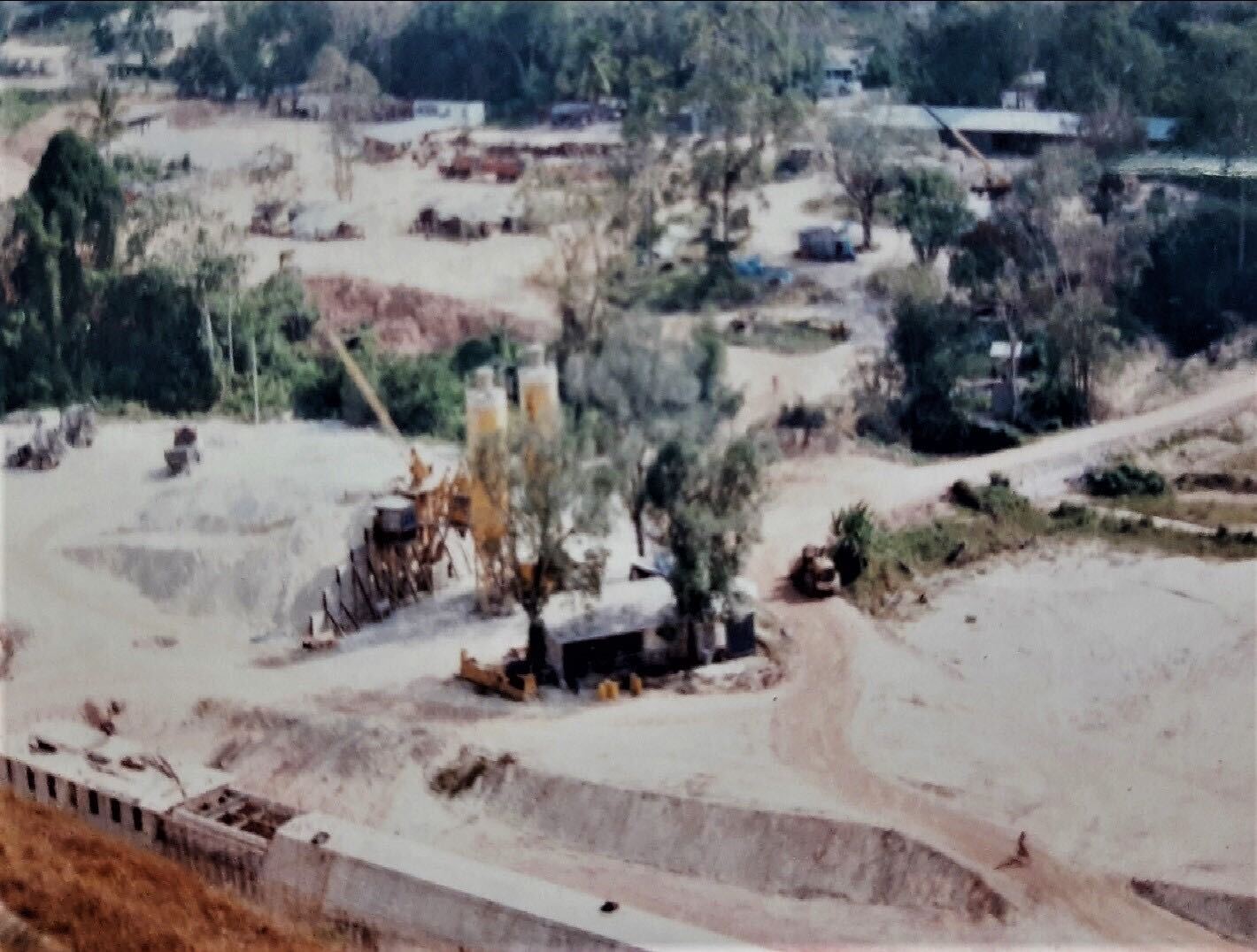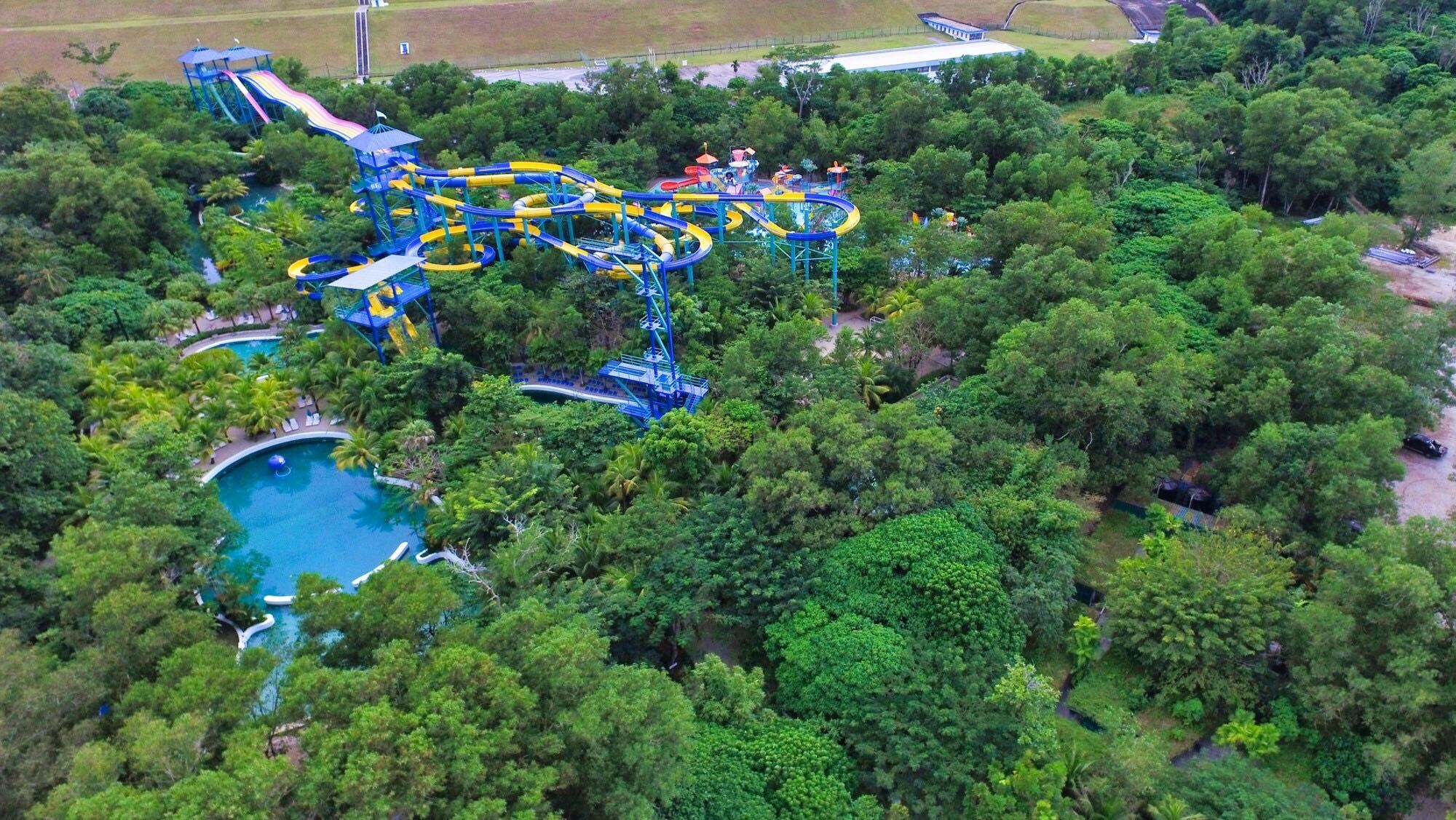Amidst the lush greenery carpeting tropical Malaysia is an unlikely place to encounter pristine white snow.
But last month, theme park developer Sim Leisure Group brought this unlikely reality closer to fruition, announcing a proposal to build Southeast Asia’s first outdoor adventure ski park in the hilltops of Pahang state, 200 kilometres north of Kuala Lumpur. If approved, tiny white bristles of fake snow will form the world’s longest dry ski slope, dissecting the pristine green hills of Cameron Highlands as it stretches for 1.2 kilometres flanked by a 920 metre-high ski lift.
Touted by the Ministry of Tourism, Arts and Culture as an eco-friendly, world-class tourism destination offering a literal “breath of fresh air”, for environmentalists, locals and a growing chorus of Malaysians on social media, the $24-million and 24-hectare ESCAPE adventure park will only add to the already existing issues of landslides, rapid overdevelopment and deforestation in the environmentally sensitive region.
“They [Sim Leisure Group] must be on a fantasy island,” said Meenakshi Raman, president of environmental justice non-profit Friends of the Earth Malaysia. “To think that they can even conceive of this kind of a project up there. The problem in this country is that anything can happen. I call it a crazy project in a very sensitive area.”
Conservationists are not alone in expressing concern. In tropical Malaysia, where snowsports are typically the reserve of the country’s elite – such as Othman Mirzan, grandson of former prime minister Dr Mahathir Mohammad, who started the country’s first alpine ski team in 2017 – even the prospect of accessible slopes hasn’t been enough to convince many people of the project’s merits.
Despite the developer’s promise of “going carbon neutral” and powering the project entirely on renewable energy, many Malaysians reacted negatively to the proposed project in the biodiverse area. An online petition initiated by Highlands residents last month urged the state government and Department of Environment to reject the development, gaining more than 55,000 signatures in a week as Twitter users decried the theme park using the hashtags #SaveCameronHighlands and #SaveDeforestation.

“Please don’t destroy it. Mother Nature is happy there,” Praga Muthaliar, one of the petition signers, told the Globe. The petition was still receiving signatures daily as of September 17.
“Building a theme park there is a big no,” Muthaliar added. “Cameron is known for its plantations and greenery. It’s a place where [we] go to get some peace of mind.”
Famed for its chilly breeze and misty peaks, Cameron Highlands has long been a getaway for Malaysians to enjoy slow-paced activities like hiking, birdwatching and strawberry picking, or views of the steeply pitched roofs and brick exteriors of colonial mansions while sipping locally-produced tea.
If the resort is approved, the atmosphere would be altered to include the ski slope and five accompanying European-style villages – featuring Iberian, British, Balkan, Nordic and Alpine themes – on a private stretch of land owned by real estate company Hektar Muda Sdn Bhd.
The ski resort holds little regard for the natural attributes of Cameron Highlands that already make it a world-class tourist destination, says Noor Jehan Abu Bakar, the chairperson of Malaysian Nature Society Pahang.
“Cameron Highlands has always been sold as a natural and a hilly highland getaway,” she said. “A theme park just does not jive with what Cameron Highland has always been.”
Jehan noted the Highlands’ current infrastructure simply isn’t prepared to accommodate a ski park, new villages or the inevitable influx of crowds, with existing roads narrow and already prone to bottlenecks.
“It takes you two hours to get to a place that is five kilometres away,” she said. “If you have another theme park, are you going to build a bigger road? Are you going to build another road?”
We have to focus on strengthening the resilience of ecosystems, particularly highlands, because of how vulnerable they are to climate impacts.
The Cameron Highlands has seen the development of cultivating land for tea plantations ever since British colonialists established the area as a resting spot in the 1880s. Today it’s still common to witness excavators chugging toward the surrounding hills and forests for vegetable farming, as well as commercial lots and houses mushrooming around the main town, Tanah Rata.

According to one study published in May this year, between 2009 and 2019 agricultural land in the Highlands expanded 5,161 hectares and urban areas grew by 1,100 hectares, while primary forest was reduced 3,598 hectares. This resulted in land surface temperatures rising by 7.5 degrees celsius during that time, compared to an average of 3 to 4 degrees celsius across the region.
Meenakshi warned overdevelopment of the Highlands, in addition to heavier rainfall fuelled by the climate crisis, poses an additional risk of major landslides in the already landslide-prone area. The Cameron Highlands averages two major landslides annually and Meenakshi pointed to recent landslides in nearby Mount Jerai after a flood that claimed six lives. Another landslide on 16 September claimed one life.
“The Cameron Highlands is not immune to [landslides and floods], so any proposal for unwarranted tourism really shouldn’t be allowed.” Meenakshi said. “We have to focus on strengthening the resilience of ecosystems, particularly highlands, because of how vulnerable they are to climate impacts.”
In an email to the Globe, the development group’s CEO, Sim Choo Kheng, claimed the land chosen for the proposed project – an abandoned tea plantation – was carefully considered. He added it would follow in the footsteps of a counterpart in Penang state, ESCAPE Penang, which transformed a barren stretch of state land into an adventure park featuring the world’s longest water slide within a mini ‘green lung’ surrounded by more than 3,000 trees.
“We will restore the current abandoned site into a place where families can enjoy nature-based experiences,” he wrote. “We will enhance the green footprint within the area by major-scale tree planting and preserving existing environmental conditions.”
Sim maintains the project will inject additional employment into the area.
“We aim to provide more jobs to local Highlanders that have been suffering due to the pandemic,” he said.
Sim claims the theme park will be integrated with its surroundings, adding that the group is currently working on an environmental impact assessment (EIA), a report required for sizable developments in Malaysia before being given a final green light.
Representatives of the Ministry of Tourism, Arts and Culture Pahang, the Cameron Highlands District Council and the state Department of Environment told the Globe that the project has not yet received approval to begin construction.

Local residents like Dilip Martin say the community’s input has not been considered, nor has the company directly informed them about the project. Normally large development projects consult local communities and authorities, even if the construction occurs on private land, he added.
“We were shocked because we are the locals there – we should know first,” said Dilip, president of Regional Environmental Awareness Cameron Highlands (REACH). “When a plan is submitted to the majlis [council], they will then send a letter to all relevant [stakeholders] to ask for their comments.”
The locals’ reactions would be different if the development enhanced the natural beauty of the hills rather than distracting from it, Dilip said, adding that the theme park’s developers seem to disregard the local community and district council’s opinions.
We were shocked because we are the locals there – we should know first
“If the theme park comes out saying that they want to build the longest walking bridge, I’ll support them myself. People will love and feel the nature,” he told the Globe.
While there are frameworks like the EIA to monitor the impact of developments, some activists say authorities are over-reliant on EIAs to justify projects in environmentally sensitive areas like the Highlands. Certain kinds of projects should just never be approved, Meenakshi believes.
“The state government should not allow this [adventure park] instead of waiting for EIAs. It’s not necessary. The thing is that all these projects are disciplined through the EIA process, and that’s not correct, because then [responsibility] falls on the Department of Environment when [these projects] should be no-go zones,” Meenakshi said. “What the Cameron Highlands needs is much more rehabilitation and protection.”
Dilip also is similarly adamant that while those living in the Cameron Highlands aren’t resistant to change simply on principle, any development in the area must place the natural environment at its core.
“I’m not saying we don’t want development. We need development, but it needs to be sustainable development,” he said. “When people come to Cameron Highlands, they want to feel nature. So why do you want to disturb nature?”


